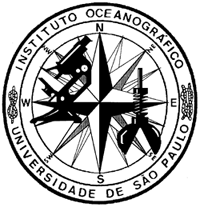The demersal fish community of the Channel and shelf of São Sebastião (SP), on the southeastern Brazilian coast, was investigated during the summer of 1994. The sampling was carried out usinga bottom otter trawl at 26 stations located between 8 m and 65 m in depth. Ninety-three species of 40 families were identified in the area. Sciaenids were the most prominent in number of species, abundance, and weight. Ctenosciaena gracilicirrhus, Paralonchurus, brasiliensis, and Cynoscion jamaicensis dominated in the catches. Cluster analysis showed three major groups of species and three groups of sites. The first group was composed of species found in the Channel and shallower areas of the inner shelf, the second of species associated with the inner shelf «50 m depth), and the third group of species fTom the outer shelf (> 50 m depth). Environrnental variables considered in Canonical Correspondence Analysis (CCA) explained 51 % of the variation in the species data. Bottom water temperature was the most important variable selected by CCA, accounting for 21% of the explainable variance. The results revealed that structure of the ichthyofauna was associated with water mass distribution. During the period studied, the area was occupied by the warm Coastal Water (CW), but cold South Atlantic Central Water (SACW) was detected over the bottom or the outer shelf, influencing the distribution and abundance ofthe main species.
Marine ecosystem; Demersal fish; Assemblages; Channel; Continental shelf; São Sebastião; Southeastern Brazil
